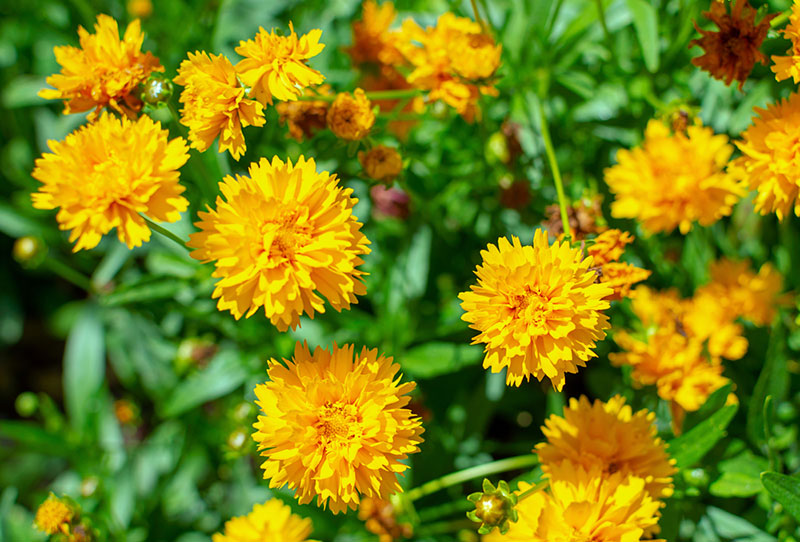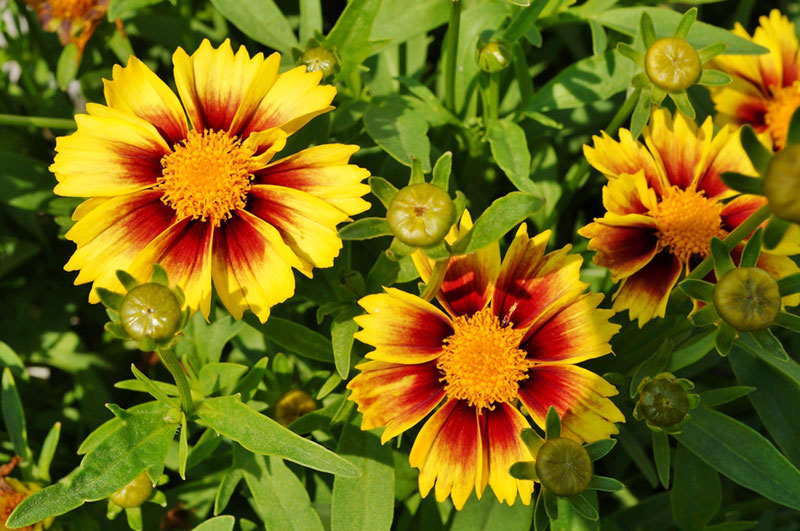
For those who enjoy a whimsical-looking garden with an English cottage aesthetic or for those looking to add dimension and contrast in their landscaping, coreopsis is a wonderful, hardy, and classic perennial that adds color and character to any garden.
These beautiful plants may seem delicate, with thin, needly stalks and a bushy growth habit that nearly resembles a small evergreen shrub.
But in reality, these plants can tolerate somewhat harsh summer conditions and still bloom the whole season through with cheery small, yellow flowers resembling that of a daisy.
If you need some sunshiny color to set your garden aglow, then keep reading to learn about how to care for coreopsis.
Coreopsis Care
These plants are pretty low-maintenance and will grow well and quickly if you pay attention to their preferences and make sure to care for them when they’re first transplanted into your desired location.
Although they don’t need much to be happy, they prefer lots of sunlight, well-draining soil, natural fertilizers, and warmer temperatures to reach their full growing and blooming potential.
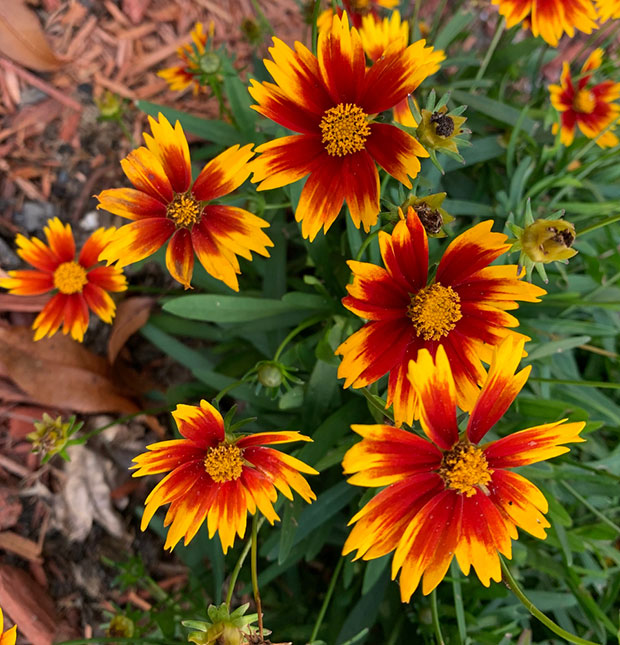
Light
Coreopsis plants want sun and plenty of it! Make sure to pick out a sunny place to plant these perennials.
They prefer a minimum of six hours of direct sun a day, and they are perfect candidates for planting in the hot afternoon and evening sun that many other perennials can’t endure.
If you live in a particularly hot climate, then take care to provide some shade for them, as they do need a break from the harsh sun of hotter zones, like zones nine and up.
Water
When first planting your new coreopsis in your desired spot, it will need regular watering, sometimes every day throughout summer if you are in a hot area, to keep the soil moist until the plant becomes established.
However, be sure that you add well-draining soil to keep the plant’s roots from staying soggy, which can also cause the plant to die.
But once your coreopsis is established, it will do fine year-round even with minimum water. It’s highly tolerant of even drought conditions. Of course, coreopsis will bloom most proficiently with regular watering but will persist even when it’s dry.
Temperature and Humidity
As is typical of plants that love the sun and can tolerate dryness, coreopsis prefers warmer temperatures: a minimum of 70 degrees Fahrenheit during the day and 50 degrees at night. Humidity typically isn’t an issue for these plants, as they thrive in dry weather.
Coreopsis can be frost-resistant as a perennial in different zones depending on the variety you choose, as they are many kinds out there. Generally, from zones three to ten, they do well and thrive.
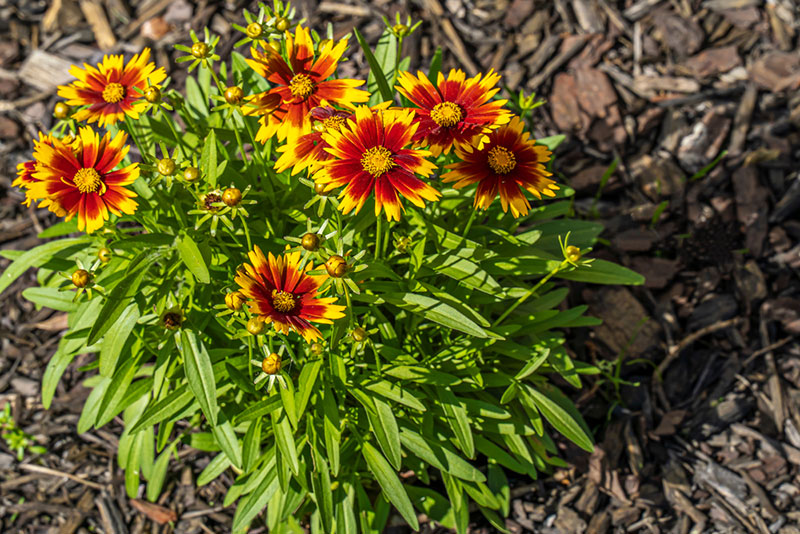
Deadheading and Pruning
While coreopsis doesn’t need deadheading to thrive, removing spent blooms as needed will help the plant push out flowers more vigorously and can help keep the plant looking tidy all through the flowering season.
Generally, these plants will bloom throughout the summer and even into fall, making this a great complementary plant for providing year-round color interest in gardening and landscaping.
Pruning for shape mostly is unneeded with coreopsis. Because they grow quickly and can take on a bushy shape, you can prune or shape the plant if desired.
You can cut coreopsis back by one-third to one-half after the summer growing season to encourage more growth during spring. Make sure to leave the woody, brown growth and only trim green growth when pruning.
Soil
Make sure to provide soil that drains well for your coreopsis.
Although they aren’t picky when it comes to soil and can grow in a variety of conditions and soil pHs, they don’t do well when they get waterlogged. Sandy and loamy soils are optimal for encouraging drainage and keeping the roots happy.
Fertilizer
Because coreopsis is so happy-go-lucky, fertilizer can often be more harmful than helpful, causing foliage growth over blooming. But if you want to give your coreopsis a boost during the growing season, try a natural fertilizer like compost that can feed your plant and encourage it gently.
Is Coreopsis Toxic?
Coreopsis, also called tickseed, is non-toxic for both humans and all animals. Every part of the plant, from foliage to bloom, is safe and not poisonous. Some varieties of coreopsis are even used for making tinctures and teas that are coffee substitutes.
Coreopsis Varieties
As previously mentioned, there are many varieties of coreopsis. Although they widely follow similar growth patterns, they can vary in size and bloom color.
“Moonbeam” coreopsis features compact foliage and has buttery, rich yellow blooms. Coreopsis rosea “Nana” variety also has compact foliage but yields richly pink blooms on dwarf-sized stems.
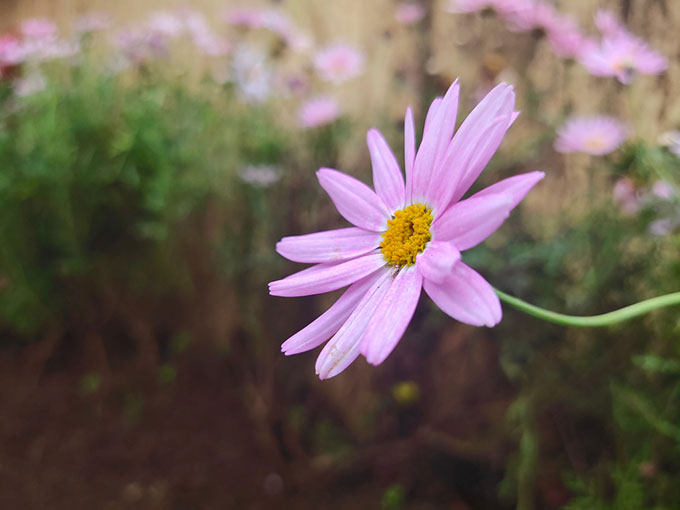
For larger varieties, the “Early Sunrise” coreopsis features double blooms that are more textured and thick than the common variety. Similarly, the “Golden Showers” coreopsis has long-stemmed, bright yellow flowers that cover the foliage during the growing season.
